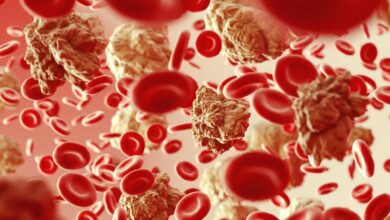Healing the Mind: A New Era in Brain Tumor Breakthroughs

Research into brain tumors is progressing rapidly, fueled by a deeper understanding of the complex molecular and cellular mechanisms that lead to the development and growth of these tumors. These advances include intensive efforts to develop new and more effective treatments that target the unique characteristics of cancerous brain cells. These therapies include immunotherapy, gene therapy, and targeted therapy. Moreover, there has been significant progress in developing advanced imaging technologies that allow for earlier and more accurate diagnoses, as well as better monitoring of treatment effectiveness. Researchers are also exploring innovative methods to deliver drugs to the brain more efficiently by overcoming the blood-brain barrier, which is notoriously difficult to penetrate. Together, these developments offer promising improvements in treatment outcomes, including higher survival rates and better quality of life for patients with brain tumors.
A brain tumor is an abnormal growth of cells within the brain or central nervous system. Tumors can be either benign (non-cancerous) or malignant (cancerous). They may originate in the brain itself (primary brain tumors) or spread from other parts of the body (secondary or metastatic tumors).
There are over 120 different types of brain tumors, each with unique characteristics, growth rates, and treatment approaches. Common types include gliomas (such as astrocytomas, oligodendrogliomas, and glioblastomas), meningiomas, and pituitary adenomas. In children, the most frequent types include astrocytomas, gliomas, ependymomas, and medulloblastomas.
Benign vs. Malignant Tumors
Benign tumors are generally slow-growing, with well-defined borders, and they rarely spread. However, they can still be dangerous if they press on vital areas of the brain. Malignant tumors, on the other hand, are cancerous, tend to grow quickly, and can invade surrounding brain tissue.
Benign tumors typically grow slowly and are often encapsulated, making them easier to remove surgically. They do not usually spread to other parts of the brain or body. However, the term “benign” can be misleading, if such a tumor grows in a sensitive area or causes increased pressure inside the skull, it can still be life-threatening. For example, a benign tumor pressing on the brainstem can affect vital functions like breathing and heart rate. Symptoms may include severe headaches, nausea, vision problems, and seizures. As a result, even benign tumors may require treatment, such as surgery or radiation, to control their growth and relieve symptoms.
Malignant tumors are cancerous and typically grow rapidly. They often have irregular borders, making complete surgical removal more difficult. These tumors can infiltrate and destroy nearby brain tissue and, in some cases, spread to other parts of the central nervous system, such as the spinal cord. Although rare, some may metastasize outside the CNS.
Treatment for malignant tumors is usually more aggressive and may involve surgery, radiation therapy, chemotherapy, immunotherapy, targeted therapy, or a combination of these. The choice of treatment depends on the tumor’s type, size, location, spread, and the patient’s overall health.
Symptoms
Symptoms of brain tumors vary depending on their size, location, and growth rate. Common symptoms include persistent headaches, seizures, personality changes, muscle weakness or paralysis, vision or hearing problems, balance issues, nausea, vomiting, and cognitive difficulties. Some people may experience no symptoms in the early stages. Common symptoms include:
- Persistent Headaches: Often mild at first but become more severe over time. Headaches may worsen in the morning or with changes in position, coughing, or straining. It is important to note that most headaches are not caused by brain tumors.
- Seizures: These may be among the first symptoms. They can be localized (affecting one part of the body) or generalized (involving loss of consciousness and convulsions).
- Personality or Behavioral Changes: Tumors in the frontal lobe can alter mood, personality, decision-making, and social behavior.
- Weakness or Paralysis: Tumors can disrupt motor pathways, causing weakness or loss of movement in one limb or an entire side of the body.
- Vision or Hearing Loss: Symptoms include blurred or double vision, peripheral vision loss, hearing impairment, or ringing in the ears (tinnitus). Balance and Coordination Issues: Tumors affecting the cerebellum or brainstem can impair balance, walking, and coordination.
- Nausea and Vomiting: These symptoms often occur in the morning and may be linked to increased intracranial pressure.
- Cognitive Impairment: Patients may experience memory issues, concentration difficulties, language problems, and reduced ability to plan or organize.
Diagnosis
Diagnosis usually begins with a neurological examination, followed by imaging techniques such as MRI or CT scans. A biopsy is often performed to determine the tumor’s type and grade. PET scans may also be used in certain cases, especially for high-grade tumors. Diagnostic steps include:
Neurological Examination
This is a fundamental part of evaluating any suspected brain or nervous system disorder. A neurologist assesses multiple brain functions, including:
- Mental status: Assesses awareness, memory, attention, language, and thinking.
- Cranial nerves: Tests functions like vision, hearing, taste, smell, eye and facial movement, swallowing, and speech.
- Motor function: Evaluates muscle strength and movement.
- Reflexes: Checks for abnormalities in reflex responses.
- Coordination and balance: Tests walking ability and stability.
- Sensory function: Assesses responses
Imaging
MRI is the most commonly used imaging method. It provides detailed images of the brain’s structure and is essential in identifying the size, location, and characteristics of the tumor. CT scans may be used if MRI is not possible.
Biopsy
A tissue sample is often required to determine the exact nature of the tumor. This can be done through a surgical procedure or a needle biopsy guided by imaging.
PET Scans
These are sometimes used to assess the tumor’s activity and distinguish between active tumor cells and treatment-related changes, such as necrosis or scar tissue.














